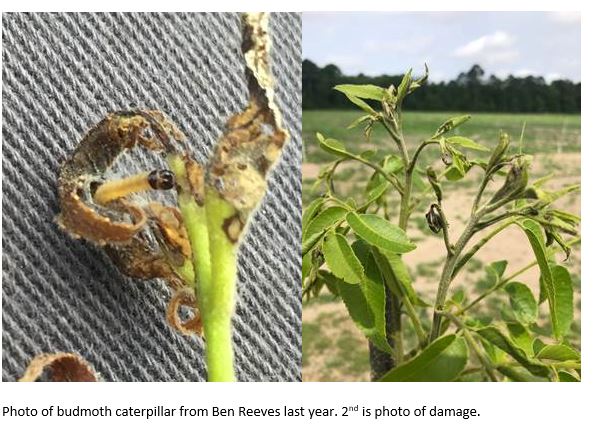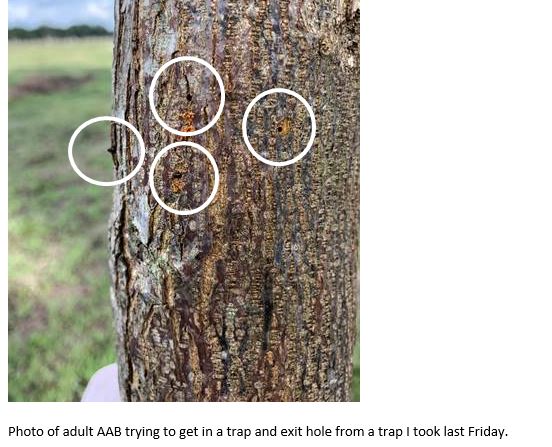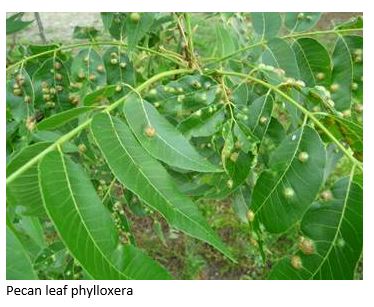As we go through bud break in Colquitt County, lets discuss a few topics such as budmoth, Ambrosia beetle and Phylloxera.

Pecan Budmoth – Accroding to Andrew Sawyer, UGA Area Pecan Agent, budmoth adults overwinter under bark scales then start laying eggs in the spring. Eggs hatch in about 6 days and the larvae then feed on buds and leaves. The tips of the leaves may look necrotic or burned. They stay in larvae stage for 2 weeks, it takes about a month to complete a generation. They can have 5 or 6 generations in a year.
What do they need to do? The best thing is scout for them first. Once you see or confirm damage from budmoths, apply insecticide. Tiny larvae will be cream colored and mature larvae will be yellow-green and have brown head. Terminals and tips of leaves look burned up.
What insecticide to use? Worm materials perform better than Lorsban if you catch budmoth early. Lorsban can provide quick quick knock-down. If you catch early, the insecticides below perform well:
- Intrepid
- Intrepid Edge
- Dimlin
- Minecto Pro
The main difference is with Minecto Pro or anything containing the cyantraniliprole family, Dr. Hudson says has a long residual. Could be a month? It is more expensive though. I think catching them early, Dimlin and Intrepid is fine.

Asian Ambrosia Beetle – According to UGA Pecan Team , Ambrosia beetle numbers are not as high this year, but they tend to have two spikes in activity: 1) Feb/March then again April/May. This pest can be bad on first year trees.

Pecan Leaf Phylloxera – I have been getting questions and discussion about phylloxera in Colquitt County. These are tiny, aphid-like insects that cause the warts on the leaves. Usually they are found in older, mature orchards. There are numerous species of phylloxera, some cause the warts on the leaves and others cause the warts on the stems.
Control – To control phylloxera, growers should consider an imidacloprid application at budbreak. The budbreak application is effective because the insecticide application coincides with egg hatch and the young worms go straight to the buds to feed. Their feeding forms the galls, which encapsulates the insect. Once the galls form, insecticides cannot penetrate.

If you have any questions please contact your local county Extension Agent.
